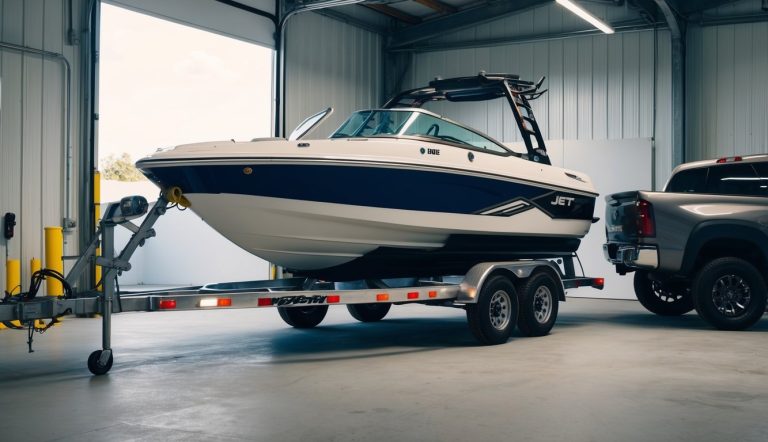Pre-Transport Preparation
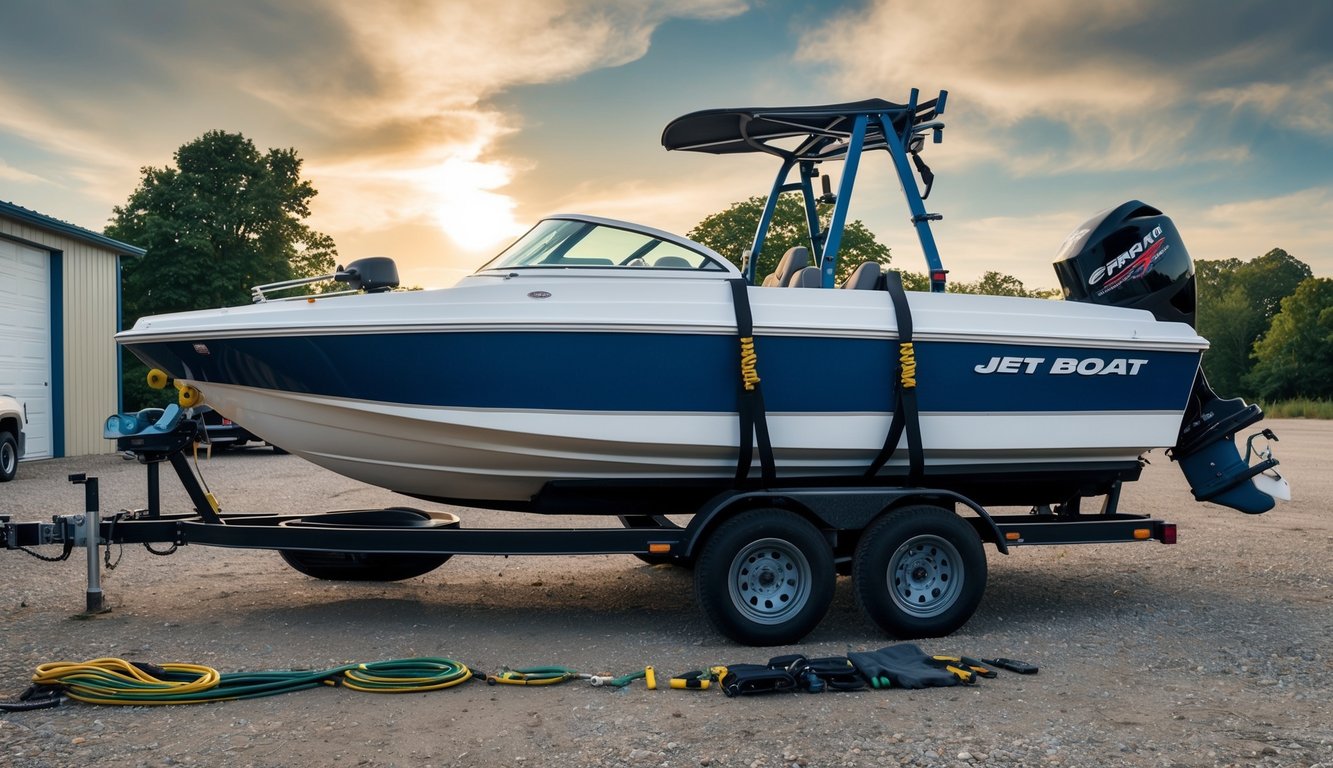
Proper preparation before transporting your jet boat helps prevent damage and ensures a smooth shipping process. Taking time to handle paperwork and assess your boat’s condition will save you headaches later.
Securing Required Documentation
Before shipping your jet boat, gather all necessary paperwork. You’ll need accurate measurements for a boat transfer quote, including length, width, height, and weight. These details help transport companies provide precise pricing and prepare appropriately.
Ensure you have:
- Proof of ownership (title or bill of sale)
- Insurance documentation showing current coverage during transport
- Transportation contract with terms clearly outlined
- Delivery authorization if someone else will receive the boat
Make copies of all documents and store the originals safely. Check if your destination requires additional permits or registration paperwork, especially for interstate transport. Having proper documentation protects you legally and financially.
Condition Assessment and Warranty Considerations
- Document your jet boat’s current condition thoroughly before transport. Take detailed photos of all sides, including close-ups of any existing damage. This visual record provides important evidence should you need to file a claim later.
- Warranty protection deserves special attention. Check if transporting your jet boat affects your manufacturer’s warranty. Some warranties have specific requirements for proper transport methods. Contact your dealer or manufacturer with questions about maintaining coverage.
- If storing personal items in the boat during transit, verify what’s covered by the transporter’s insurance. Most companies recommend removing loose items completely from the boat.
- Before pickup, disconnect and secure the boat’s battery to prevent electrical issues. Also drain all fluids including fuel, water and waste tanks to reduce weight and prevent leaks.
Choosing the Right Transportation Method
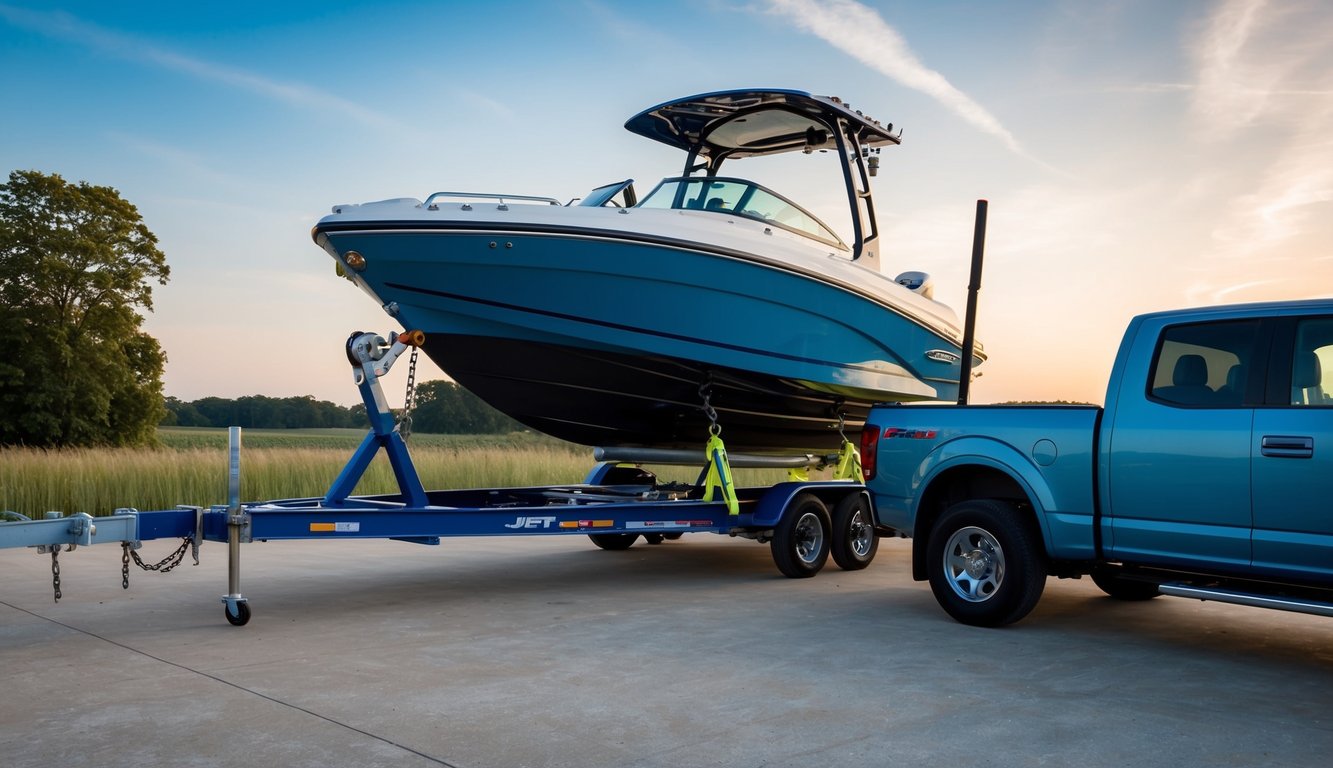
Selecting an appropriate method to transport your jet boat affects both safety and cost. The right choice depends on distance, boat size, and your specific needs.
Comparing Overland and Water-based Options
- Overland Transport moves your jet boat on trailers via highways. This method gives you more control over timing and is often faster for shorter distances. Flatbed trailers and enclosed trailers are common options for overland transport.
- For larger jet boats, specialized boat haulers provide the necessary equipment and expertise. These professionals secure your vessel properly to prevent damage during transit.
- Water-based Transport involves moving your boat through waterways. This option works well when your destination connects via navigable water routes. It eliminates the need to load and unload your boat onto trailers.
- Water transport can reduce stress on your boat’s structure since it remains in its natural environment. However, this method typically takes longer and depends heavily on weather conditions.
Cost-Efficiency Analysis
- Transportation costs vary based on several factors. Distance is the primary consideration – longer routes increase fuel consumption and driver time, raising prices.
- Boat dimensions significantly impact transport expenses. Oversized boats may require special permits, escorts, or route planning, adding to costs. Standard-sized jet boats typically cost less to transport.
- Professional transport services often provide insurance coverage, protecting your investment during transit. While DIY transportation seems cheaper initially, hidden costs like fuel, equipment rental, and potential repairs can accumulate quickly.
- Consider obtaining quotes from multiple boat transportation companies to compare prices. Many providers offer online calculators to estimate costs based on your specific requirements.
Transport Equipment and Accessories
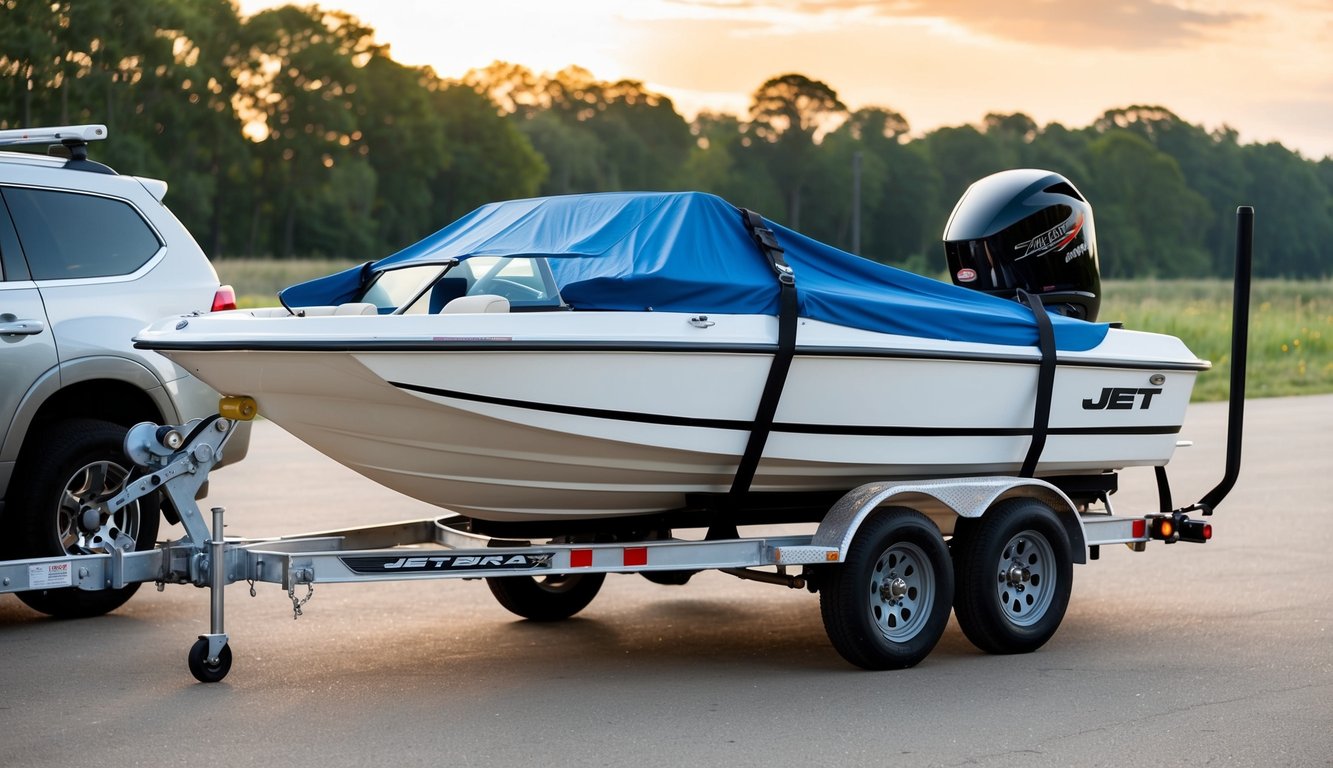
The right equipment makes boat transport safer and more efficient. Proper gear protects your investment and ensures a smooth journey from dock to destination.
Selecting Trailers and Towing Vehicles
When transporting a jet boat, choosing the right trailer is crucial. Look for trailers specifically designed for watercraft with proper hull support and marine-grade materials that resist corrosion. Single-axle trailers work well for smaller jet boats, while tandem-axle options provide better stability for larger vessels.
Your towing vehicle must have adequate capacity for the combined weight of the boat and trailer. Check your vehicle’s towing rating before purchasing a trailer. Most mid-size SUVs can handle smaller jet boats, but larger boats may require a full-size truck.
Essential trailer features to consider:
- Adjustable bunks or rollers for proper hull support
- Surge brakes for safer stopping
- LED lights for visibility
- Winch with appropriate capacity
- Corrosion-resistant materials
The same principles apply when transporting smaller watercraft like a jetski or scooter, though the equipment requirements are less demanding.
Understanding Tongue Weight and Trailer Balance
Tongue weight refers to the downward force your trailer exerts on the hitch ball. It typically should be 10-15% of your loaded trailer weight for optimal handling. Too little tongue weight causes trailer sway; too much strains your vehicle’s rear suspension. Proper boat placement on the trailer affects balance significantly. Position your jet boat so weight distributes evenly, with slightly more toward the front. Use a tongue weight scale to measure precisely—they’re available at most marine supply stores.
Balance issues signs include:
- Difficulty steering
- Excessive bounce while driving
- Vehicle rear sagging noticeably
- Trailer fishtailing at highway speeds
Adjust the boat’s position forward or backward on the trailer until you achieve the recommended tongue weight. Secure items inside the boat to prevent shifting during transport that could affect balance.
Loading and Securing Your Jet Boat
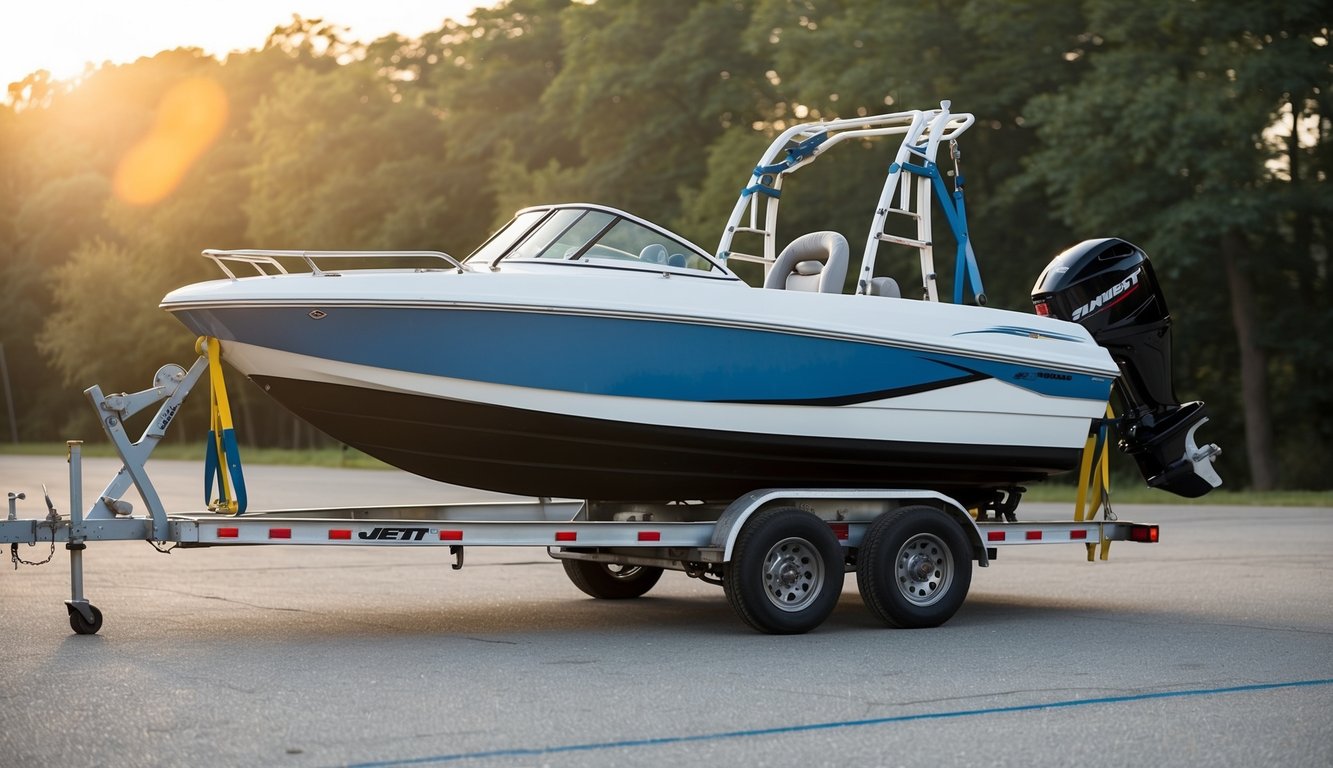
Properly loading and securing your jet boat is crucial for safe transport. Getting this right protects your investment and ensures everyone’s safety on the road.
Step-by-Step Loading Procedures
- Start by inspecting your trailer before loading. Check that bunks are positioned correctly and all rollers move freely. Rotate each bunk from left to right if they seem bound up, as this can make loading difficult.
- Back your trailer into the water at the appropriate depth – typically with the fenders just touching the water for jet boats. This prevents the boat from hitting the trailer while loading.
- Approach slowly at idle speed, keeping the boat centered with the trailer. Have a spotter guide you if possible. Use the boat’s momentum and a small burst of power to ease it onto the bunks.
- When loading a jet boat package, connect the winch strap to the bow eye and use the winch to pull the boat completely onto the trailer. Never use engine power to drive fully onto the trailer!
- Double-check alignment before leaving the ramp. The boat should sit centered with weight distributed evenly.
Tie-Down Strategies for Stability and Safety
- Securing your jet boat properly prevents shifting during transport. Start with the bow – attach the winch strap securely to the bow eye and lock the winch. Add a safety chain as backup.
- Use ratchet straps at the stern, connecting to the trailer’s rear tie-down points. Cross-tie when possible for added stability. Never attach straps to railings or cleats not designed for trailering loads.
- Protect your boat by using padded straps where they contact the hull. Check strap tension after driving a short distance – they often loosen initially.
- Batten down all interior cabin items and secure any storage space inside the boat. Lock hatches and doors or tape them shut to prevent accidental opening.
- For long-distance transport, consider using transom support straps to reduce bounce. This preserves your suspension and makes for a smoother ride, ensuring your jet boat arrives ready for fun on the water.
Safe Transport Practices
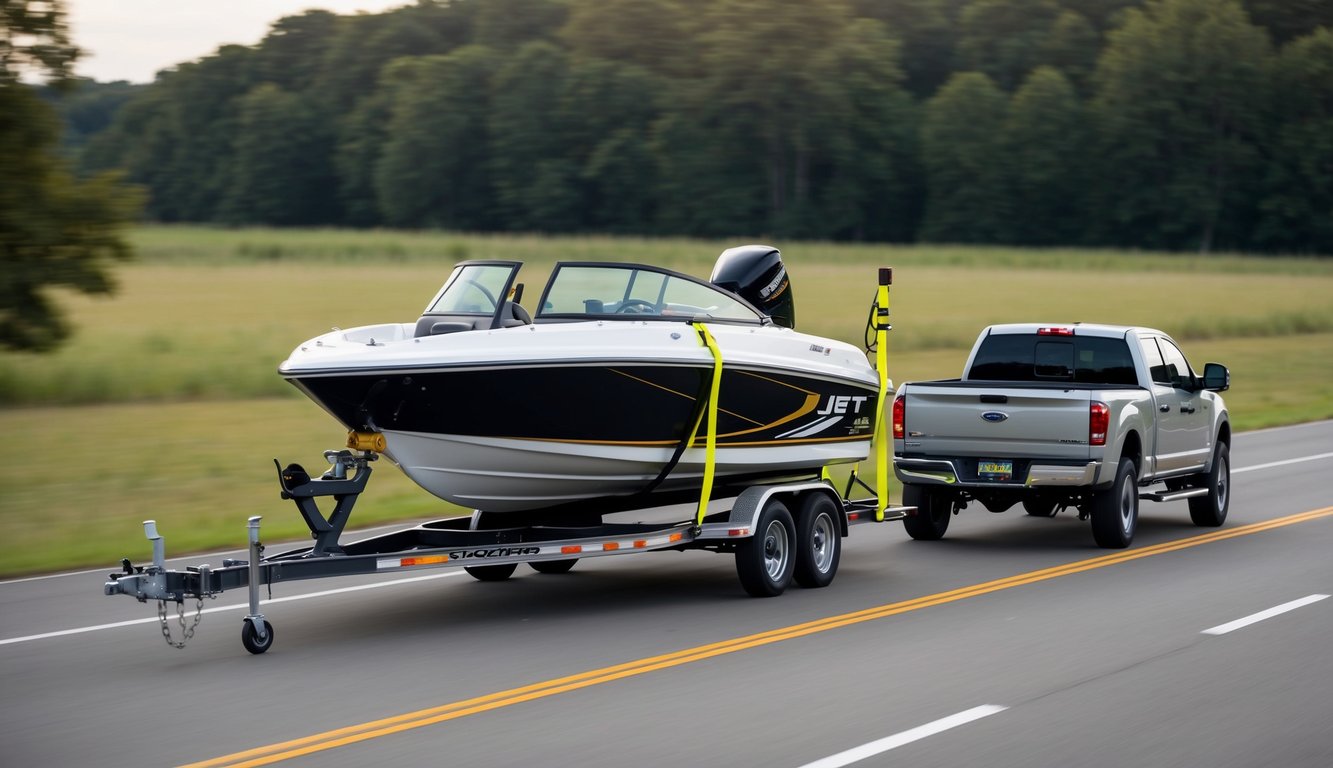
Ensuring your jet boat arrives safely at its destination requires attention to detail during the actual transport journey. Following proper protocols during transit helps prevent damage and ensures a smooth delivery experience.
Monitoring While on the Move
- Regular check-ups during transport are essential for your jet boat’s safety. Stop every 100 miles to inspect the tie-downs, straps, and overall security of your boat. Look for any signs of shifting or loosening that could compromise safety.
- Make sure the transport cover remains properly secured, as wind can cause significant damage at highway speeds. If you notice any problems, address them immediately rather than continuing the journey.
- Keep track of the trailer connections and ensure brake lights remain functional throughout the trip. This is especially important during long-distance transports where equipment might loosen over time.
- If using a professional service, confirm they have a tracking system so you can monitor your boat’s progress during transit.
Navigating Roadways and Weather Conditions
Weather plays a crucial role in safe boat transport. Check forecasts carefully before beginning your journey and adjust plans accordingly if severe conditions are expected. Avoid transporting during heavy rain, high winds, or icy conditions when possible. These conditions increase risk dramatically and can make large loads like boats extremely hazardous.
When driving, maintain slower speeds than normal, especially when:
- Going around curves
- Changing lanes
- Encountering strong crosswinds
- Navigating through construction zones
Allow extra distance for braking since towing a boat significantly increases stopping distance. Be particularly cautious on downhill stretches where momentum builds quickly. Choose routes that avoid low bridges, narrow roads, and areas with height restrictions. Interstate highways generally provide the safest pathway for boat transport due to wider lanes and better visibility.
